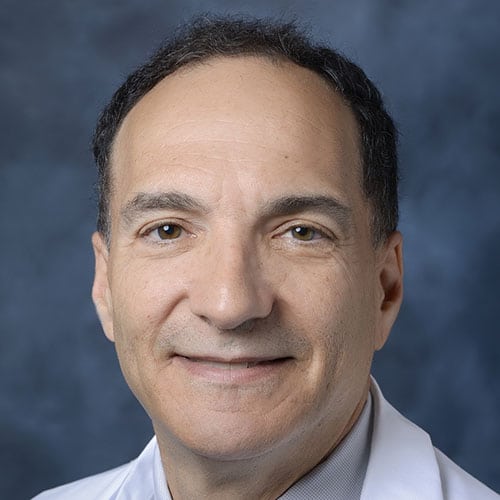 Photo by David Talukdar/Getty Images
Photo by David Talukdar/Getty Images My struggles this COVID-19 year were bracketed by an email on February 26 and a shot in the arm on New Year’s Eve. The February email from my health system blandly reported the extensive spread of a novel virus abroad. That message still brings my imagination to the first moments after the RMS Titanic hit an iceberg. Nothing had changed. Yet, a warning bell had sounded on an irreversible cascade of unimaginable events.
My own struggles in the COVID-19 year pale in comparison to many of my patients, three of whom lost their lives. Another was pulled from the brink by Cedars-Sinai’s heroic ICU team during a two-week stint on a ventilator. One of the year’s rare mercies was my patient’s amnesia for the trauma of that time. Others suffered fevers, coughs and, even worse, intense anxiety about their future. Parents faced unresolvable conflicts between children stranded at home and the demands of their work and livelihoods. Nearly all of us struggled with daily decisions about which activities were safe versus those that were “safe enough.”
These collective struggles now link us with survivors of other epidemics. The most recent plague, the 1918 Spanish flu, evolved in ways oddly similar to COVID-19. Sweeping the nation in a series of waves, it killed about 700,000 people, equivalent to two million in a nation of our current size. Although the 1918 flu was not well understood, public health agencies recognized the benefit of masking and social distancing. They met similar resistance. Most cities eased restrictions too early and experienced a second wave; in some, notably St. Louis, the second peak was deadlier than the first. Unfortunately, a century proved insufficient to teach us its lessons.
Some say that rather than developing character, personal struggle reveals it. In that vein, the struggles this year revealed the enormous courage of my colleagues taking meticulous care of COVID-19 patients despite personal risk. It also revealed the inspiring strength of families in protecting and caring for their most vulnerable.
the struggles this year revealed the enormous courage of my colleagues taking meticulous care of COVID-19 patients despite personal risk.
But the collective struggles of 2020, including the shocking death of George Floyd, have also held a mirror to our nation, reflecting persistent racial discrimination in every facet of American life. That included our pandemic. African Americans and Hispanic Americans are 2.8 times more likely to die from COVID-19 than Americans at large, a number that reflects the disproportionate levels of poverty they experience compared to white Americans. With poverty comes lower educational attainment, lower rates of insurance, higher drug and alcohol abuse and poor nutrition. Given these startling inequalities, no one should be surprised that when white America catches a cold, Americans of color develop pneumonia. This week, when a middle-aged minority patient of mine with borderline diabetes was admitted to Cedars-Sinai with COVID pneumonia, I watched as the very hand of racial and ethnic disparity reached into my medical office.
In Genesis, after wrestling the entire night with the spirit of the Almighty, Jacob was renamed Israel, “he who struggles with God.” As we collectively struggle with God, ourselves, the pandemic and the freshly-exposed ills of society, we become more truly the children of Israel. In these struggles, we might consider that a virus that spreads from a few individuals to tens of millions within a single year shows us how our fate intertwines with others. During the dark days of the Great Depression and World War II, our oldest seniors learned and lived the lesson that they were “all in it together.” If the pandemic reveals our collective consciousness and appreciation of the universality of our human vulnerabilities, we will all have gained. While some in this wealthy nation remain poorly nourished, financially handicapped, underinsured and subject to unequal justice, none can be safe nor free.
On December 31, I visited one of the fifteen vaccination stations at Cedars-Sinai. A cheerful nurse asked the usual questions about allergies and then injected my left arm. Once I complete the two-shot series on January 21, I will start to move on from the many trials and limitations of the COVID-19 year. Yes, I’ll continue to mask and socially distance — I am in it together with each and every person who is still waiting for that reassurance. But I won’t worry that a mild sore throat is “it.” I won’t feel the same tug of anxiety when a patient reveals a COVID-like symptom.
With time we can all be vaccinated and start to move on. Hopefully, we will remember the friends, family members and others whose absences change our lives forever. We should appreciate that — with or without an epidemic — our time is limited. If we learn from the past year’s struggles, we can use that time both to recover, grow personally, and address the pre-existing social ills laid bare by its ravages. That is togetherness.
Daniel Stone is Regional Medical Director of Cedars-Sinai Valley Network and a practicing internist and geriatrician with Cedars Sinai Medical Group. The views expressed in this column do not necessarily reflect those of Cedars-Sinai.






















 More news and opinions than at a Shabbat dinner, right in your inbox.
More news and opinions than at a Shabbat dinner, right in your inbox.